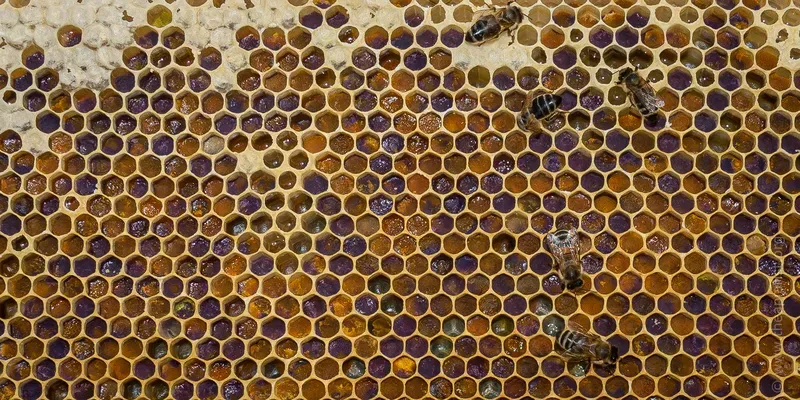Pollen and brood rearing

Simplistically you can think of pollen and nectar as the building material to 'make' new bees, and the fuel that enables them to function.
Of course, it's a little more complicated than that.
Nectar is the principal source of carbohydrates in the form of sugars - glucose, sucrose and fructose - needed for activity, flight, and (through thoracic muscle contraction without flying) thermoregulation of the nest.
Pollen primarily provides the protein and amino acids needed for growth, but also contains essential fats, minerals and vitamins. These are critical for brood development, but are also needed by adult bees.
Over a century ago, Huber had concluded that colonies could not rear brood in the absence of pollen, though this conclusion was contentious. This was further investigated by Haydak (1935) who maintained colonies in flight cages and monitored brood production after removal of all pollen from the cage.
Haydak used a greenhouse, I've used poly tunnels covered in insect-proof netting. Colonies do not thrive in these conditions but - with care and good nutrition - can be kept for a full season and overwintered.
Haydak demonstrated that brood rearing in the absence of pollen was possible, but only for relatively short periods. After a fortnight, any new larvae produced were cannibalised after only 2-3 days of development {{1}}.
Winter bee production
In the post last week I discussed the timing of the production of winter bees and suggested that environmental pollen availability was the primary determinant.
As summer segues into autumn, pollen increasingly becomes limiting; there are fewer flowering plants and trees, and the climatic conditions are less good for foraging {{2}}. Brood rearing slows and, depending upon latitude and the particular season, may stop altogether.
The colony - it's bees, stored carbohydrates (honey) and protein (pollen) - then remain hunkered down through the winter until conditions improve the following Spring when colony expansion can start again.
So, if pollen is essential for brood rearing, what are the practical implications for beekeeping in terms of the timing of autumn miticide treatment and the production of strong colonies in early Spring? And, if there are practical implications {{3}}, are there benefits to be gained from the addition of pollen?
And, if there are, how is this best achieved?